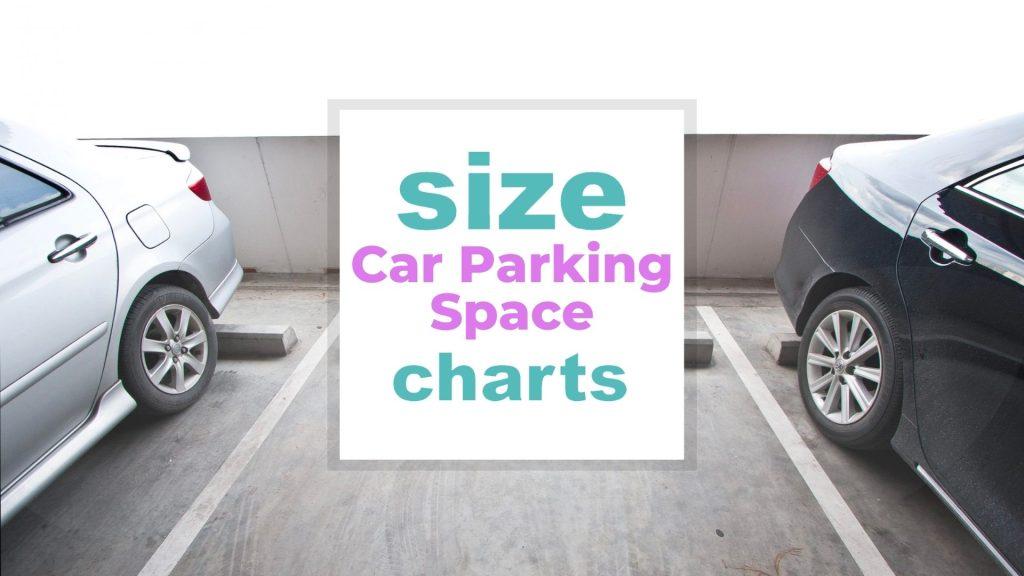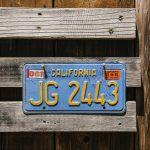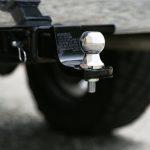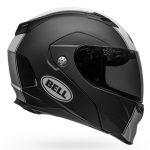Car Parking Space: What Is The Average Size?
A car parking space is an area of land designated for the sole purpose of parking vehicles. Car parking spaces can be found in a variety of locations, including on-street parking, off-street parking, and in multi-level car parks. In most cases, car parking spaces are designated by markings on the pavement or road surface, which indicate where vehicles should be positioned.
Parking spaces can also be further divided into categories, such as disabled parking spaces, electric vehicle charging spaces, and motorcycle parking spaces. While the specific features of car parking spaces may vary depending on their location and purpose, they all serve the same basic function: to provide a safe and convenient place to park vehicles.

When it comes to parking your car, it is important to understand the basics of car parking space and sizing. This will help ensure that you are able to park your car safely and efficiently. After all, there is nothing worse than trying to park in a tight spot and ending up damaging your car or getting a ticket. So what are some things you should keep in mind?
This guide takes you through the essentials of car parking space including sizing.
Jump right into the Frequently Asked Questions
Related: Average 2 Car Garage Size: what is the size of a 2 car garage?
Car Parking Space Table of Contents
Car parking space size charts
Related: Single Car Garage Size and Dimensions
| Region | Dimensions ( L x W ) (feet) | Dimensions ( L x W ) (meters) |
| Standard | 16.4 x 8.2 | 5 x 2.5 |
| US | 18 x 8.6 | 5.5 x 2.6 |
| UK | 16 x 7.9 | 4.8 x 2.4 |
| India | 16.4 x 8.2 | 5 x 2.5 |
| France | 16.4 x 7.5 | 5 x 2.3 |
| Canada | 16.4 x 8.2 | 5 x 2.5 |
Learn more about car parking space (video)
Frequently Asked Questions
What is the size of a normal car parking space?
On average, a normal car parking space is 16 to 18 feet long and 8 to 9 feet wide, which comes out to about 160 square feet. While there is some variation depending on the location, this is generally considered to be the standard size. So, next time you’re circling the lot, keep an eye out for spaces that meet these dimensions.
Drivers looking for a parking spot in a crowded lot may feel like they’re searching for a needle in a haystack. Even when they finally find an open space, they may be concerned about whether their car will fit. So, understanding this sizing can settle your nerves and help you park comfortably.
What is the size of a car parking space in meters?
The size of a car parking space in meters can vary depending on the country, but the average space is about 2.4 meters wide and 4.8 meters long. These dimensions are just big enough to fit a standard-sized car, and they provide enough room for people to get in and out of the car without feeling cramped.
Of course, there are always exceptions to the rule, and some parking spaces may be smaller or larger than average. But for the most part, 2.4 meters by 4.8 meters is a good guideline to follow when looking for a place to park your car and meet specific safety standards in order to ensure the safety of drivers and pedestrians.
Of course, there are always exceptions to the rule. For example, SUVs and trucks tend to be larger than the average car, so they may not fit as easily into a standard parking space. If you’re ever in doubt, it’s always best to err on the side of caution and choose a larger parking space. After all, it’s better to have a little extra room than to risk getting a ticket or causing an accident.
Are 7 feet enough for car parking?
Yes. Most experts agree that 7 feet is enough for safe and comfortable car parking for standard cars. This gives you enough room to open your doors without hitting another car, and it also allows you to maneuver easily when backing out of your space.
Of course, if you have a larger vehicle, you may need more space. If you’re parking in a crowded lot, for example, you may need to be more cautious and take up less space. But in general, 7 feet should be enough for most car parking needs and so this is a good rule of thumb.
What is the average width of a car?
The average width of a car is between five and six feet, mostly about 5.8 feet. This measurement includes the mirrors and excludes the side trim. It’s important to note though that the width of many cars varies depending on the make and model. For example, a Honda Civic is generally five feet wide, while a Ford F-150 is closer to six feet wide.
The width of a car is an important safety consideration, as it determines how much space the vehicle takes up on the road. A wider car is more likely to be involved in a sideswipe collision, while a narrower car may have difficulty navigating through traffic. As such, drivers should be aware of the width of their vehicles and take care to stay within their lane.
What are the 4 types of parking?
The four main types of parking are: perpendicular, angled, parallel, and head-in.
- Perpendicular: Perpendicular parking is when your car is parked at a 90-degree angle to the curb. Perpendicular parking can be helpful in a number of situations. For example, if you’re parking in a crowded lot, it can be difficult to find a spot where you can back into space.
With perpendicular parking, you can simply pull into a spot head-first. In addition, perpendicular parking can be helpful when you’re trying to avoid getting your car door dinged by another driver. However, it’s important to keep in mind that not all states allow perpendicular parking. Before attempting this type of parking, be sure to check the local laws in your area. - Angled: Angled parking is when your car is parked at an angle less than 90 degrees to the curb. There are a few different angle options, but the most common is 45 degrees. This option allows for more cars to be parked in a given space than if they were parked parallel to the curb. Angled parking can be found in both on-street and off-street parking areas.
One advantage of angled parking is that it allows drivers to park closer to the destination, which can be convenient for shopping trips or errands. Another advantage is that it can help to reduce traffic congestion by making it easier for drivers to enter and exit parking spaces. Some disadvantages of angled parking include the fact that it can be more difficult to park and that it can block visibility for pedestrians and bicyclists. - Parallel: Parallel parking is when your vehicle is parked alongside the curb, parallel to other parked cars. Most people parallel park without giving it much thought – they simply pull up alongside the car in front of them and then back into space. However, there is actually a precise method that should be followed in order to parallel park correctly.
First, align your car with the car in front of the empty space so that you are about two feet away from it. Then, put your car into reverse and slowly back up until your rear bumper is lined up with the rear bumper of the car in front of you. At this point, you should be able to see the sidewalk in your side mirror.
Next, turn your wheel all the way to the right so that your car starts to turn into an empty space. Once your front bumper is past the rear bumper of the car in front of you, begin to straighten out your wheel. Finally, continue backing up until you are centered in the space, and then put your car into the park. - Head-in: Head-in parking is when you drive your car into a spot so that it is facing the same direction as the traffic flow. This type of parking is often used in garages and driveways, as it allows for easier exit from the parking space. Head-in parking can also be used in larger parking lots, though it may require more time to park the vehicle.
When exiting a head-in parked car, the driver should be aware of traffic and pedestrians, as they will need to back out of the space. Otherwise, head-in parking is a safe and efficient way to park a car, and it can be used in a variety of different situations.
Please note that each type of parking above has its own set of benefits and challenges. Perpendicular parking tends to be easier for novice drivers, while angled and parallel parking requires more precision. Head-in parking can be difficult to get in and out of if there are other cars parked closely on either side. Ultimately, the best type of parking depends on the situation and the driver’s level of experience.
Learn more about parallel parking in this video
How long is a car length?
The average length of a car is usually around 14.7 feet. This length can vary slightly depending on the make and model of the car. For example, a small sedan may be around 13.5 feet long, while a large SUV may be around 16.5 feet long.
The length of a car is important to consider when parking, as it determines how much space you will need. It is also important to know the length of your car when driving on the highway, as it can help you gauge how much distance you need to leave between you and the car in front of you.
Knowing the length of your car can also be helpful when buying a new garage or driveway, as you will need to make sure that there is enough space to comfortably park your car.
Important things worth knowing about car parking
First, it is important to know the minimum size of a parking space. This can vary depending on the laws in your area, but in general, a parking space should be at least 9 feet wide and 18 feet long. This will give you enough room to park without having to worry about hitting another car or ending up taking up two spots.
Second, you should always try to park in an empty spot. Not only will this prevent you from damaging someone else’s car, but it will also make it easier for you to get in and out of your own car. If there are no empty spots, look for a spot that is as close to the front or back of the parking lot as possible. This will make it easier for you to get in and out without having to walk too far.
Finally, when you are ready to leave, make sure that you check your surroundings before driving off. This includes making sure that there are no pedestrians or other cars in the way. By following these simple tips, you can help make sure that you are able to park safely and effectively.
Conclusion
A car parking space is a valuable commodity in most cities. In order to maximize the use of this limited resource, it’s important for drivers to be aware of how to park their cars properly. We hope that with this car parking space guide, you can now make sure your car takes up as little space as possible and leaves other drivers with enough room to maneuver.
Do you have questions or clarifications regarding the car parking space? Do you have answers to your questions whether it’s about standard parking space dimensions or typical parking space size? Please ask in the comments and we’ll do our best to assist. Thanks for reading!
Picture in this post is by Aditya Rathod on Unsplash
Related to Car Parking Space
- Airplane Sizes and Different Types
- LS2 Helmets Sizes for adults and kids
- Average Pick-Up Truck Size and Dimensions
- Car Parking Space: What Is The Average Size?
- Arai Helmets Sizes
- Helicopter Sizes and Different Types
- License Plate Size US Dimensions
- What is my Driving Gloves Size?
- Rooftop Tent Size Chart
- KTM Bike Sizes
- Graco Infant Car Seat Size and How to Install It
- Toyota Tire Size Guide (Size Charts and Dimensions Included)
- Infant Car Seat Size Explained in Detail by Age, Weight & Height
- Chevrolet Tire Size Guide for Different Models
- Britax Car Seat Size Chart by Model, Weight and Age
- U-Haul Truck Size: Choose the Right Sized Moving Truck
- Trailer Ball Size Chart – Know What Works Best for Your Trailer/RV
- Ram tire size guide for all models (size charts and dimensions included)
- Wiper Blades Size chart by type: what size are my wiper blades ?
- Bell helmet sizing chart – Helmet sizes for youth, women and men
- Yeti Cooler Size Chart And Comparison
- RV Mattress Size Chart – Ultimate Buying Guide
- Car cover size chart: a complete guide by car size
























